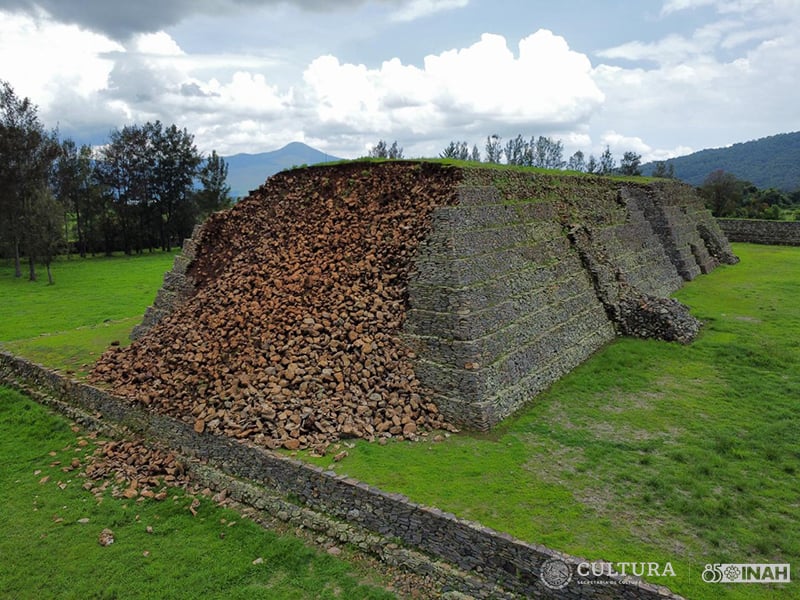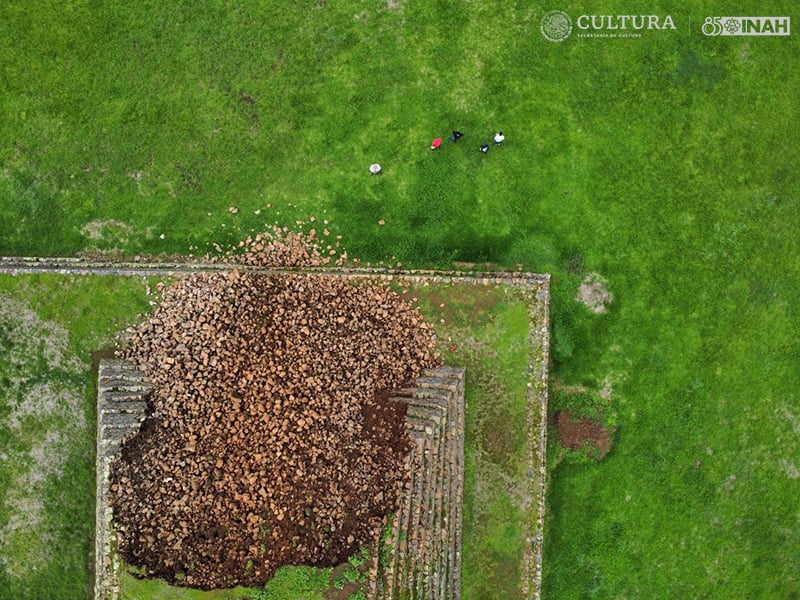Archaeology & History
Ancient Pyramid in Mexico Damaged After Heavy Downpours
The pyramid, built by one of the largest Meso-American states, was more than 1,100 years old.

A pre-Columbian pyramid at Ihuatzio Archaeological Zone, Michoacán, Mexico, has partially collapsed following downpours around Lake Pátzcuaro, according to Mexico’s Instituto Nacional de Antropología e Historia (INAH).
In its announcement, the INAH explained that heavy rainfall seeped into cracks caused by high temperatures and prolonged droughts, compromising the integrity of a structure that had remained intact for centuries.
The pyramid was built over 1,100 years old ago by the ancestors of the modern-day Purépecha people, an indigenous community from northwestern Michoacán. Purépecha culture emerged in the 14th century and grew to become the second-largest in all of Meso-America, after warding off Aztecs and Spanish colonizers alike.

Aerial view of the collapse. Photo: Ramiro Aguayo, INAH.
Because the Purépecha left behind no written records of their own, pyramids like the ones in the Ihuatzio Archaeological Zone are crucial in reconstructing their mysterious history. Archaeologists believe that the collapsed pyramid was used for human sacrifices made to Curicaueri or “Great Fire,” a deity associated with victory and sunlight.
Ihuatzio Archaeological Zone is located a little over four miles south of Tzintzuntzan, an ancient township on the shores of Lake Pátzcuaro. Experts believe the area was first settled between 900 C.E., with the Purépecha arriving some 300 years later. Built on an artificially raised plateau, the Archeological Zone was primarily a place of worship, complete with a ceremonial ground and astronomical observatory.
Personnel from the Instituto Nacional’s Michoacán Center, “confirmed the damage to least six of the stepped bodies” on the pyramid’s southern base, affecting the structure’s exterior as well as interior.
Speaking to local, national, and international news outlets, descendants of the Purépecha interpreted the pyramid’s collapse as “supernatural sign of impending doom,” noting that “before the arrival of the conquistadors, something similar happened, which for the Purepecha worldview of that time was because the gods Nana Kuerhaepiri [Curicaueri] and K’eri Kurikweri were displeased.”
The INAH that “damage assessment activities continue and are focused not only on recovering the affected part [of the pyramid] but also on thoroughly repairing the structure of the building.”
It added that, because previous attempts to repair other damaged buildings and artifacts have proven unsuccessful, the organization will employ professionals from a variety of disciplines and use different techniques.
Fortunately, the pyramid was insured with the Agroasemex Insurance Company, which INAH said has been notified of the collapse “in order to begin the process of obtaining the necessary funds for the intervention.”





